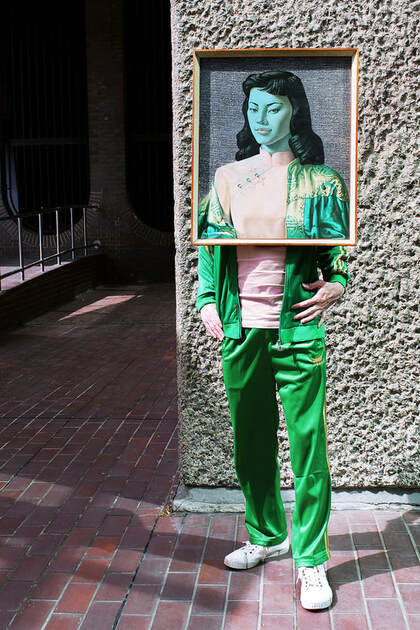Nigel Grimmer
Visit Nigel Grimmer's page
Nigel Grimmer was born in Great Yarmouth, Norfolk; he lives in London. Grimmer is a multimedia artist, with twenty years of exhibition experience; he has exhibited his projects extensively throughout the UK and USA.
Grimmer has a Masters in Fine Art from Central Saint Martins, London. Grimmer is Senior Lecturer in Fine Art at The University of Bedfordshire; he is also a Visiting Lecturer in both Fine Art and Photography in a number of UK Universities.
On his words: ‘I am a mixed media artist working primarily with photography and sculpture. I use my practice to research the language of the photographic portrait. Historically my investigation focused on domestic photography, specifically the family album. Recently I have begun to study the self-portraits produced for use within social media, particularly dating apps and Instagram.
I think of my work as anti-portraiture, the model’s face is obscured in the majority of my photographs through a variety of devices. This methodology stems from a reaction against photographic history and traditional practice, which I see as exploitative and corrupt. There is then an underlying narrative of the exploitation of the other, the model and the unsuspecting public by the privileged’.
Shortlisted for It's Art Call 2018
Grimmer has a Masters in Fine Art from Central Saint Martins, London. Grimmer is Senior Lecturer in Fine Art at The University of Bedfordshire; he is also a Visiting Lecturer in both Fine Art and Photography in a number of UK Universities.
On his words: ‘I am a mixed media artist working primarily with photography and sculpture. I use my practice to research the language of the photographic portrait. Historically my investigation focused on domestic photography, specifically the family album. Recently I have begun to study the self-portraits produced for use within social media, particularly dating apps and Instagram.
I think of my work as anti-portraiture, the model’s face is obscured in the majority of my photographs through a variety of devices. This methodology stems from a reaction against photographic history and traditional practice, which I see as exploitative and corrupt. There is then an underlying narrative of the exploitation of the other, the model and the unsuspecting public by the privileged’.
Shortlisted for It's Art Call 2018

